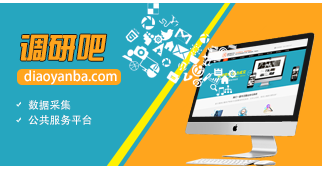verty is not just an emerging-market problem. In the United States more than 45 million people, or 15% of the population, are officially poor, according to the Census Bureau. What’s more, this percentage has increased every year but one (2006) since the 21st century began. At 16%, Japan is doing no better. And in the European unio almost 120 million people—one in every four—are classified as at risk of poverty or social exclusion.
In the past, businesses in the developed world have largely ignored the needs of these groups. To be sure, they know that not all their customers are rich, and many companies have invested significantly in creating low-cost products and services specifically tailored to people on a tight budget. Most automakers have offered low-budget cars for decades: The Model T Ford, the VW Beetle, the Mini Cooper, and the Citroën 2CV were in their time designed for what their manufacturers saw as the budget market. Low-cost “hard discounters” such as Aldi and Lidl in Europe and Market Basket in the United States have emerged relatively recently in the retail industry.
But the low-cost, low-price products and services that have traditionally served poorer consumers in Europe are usually still out of reach for the 25% who are at risk of poverty. Consumers in this group often can’t buy essential products and services without significant aid from the state—whose ability to provide such aid is diminishing even as the need for it grows. Limited public transportation, for example, means that many poor people in rural districts must rely on aging, extremely cheap vehicles. Someone whose car breaks down may be out of work as a result.
In recent years a number of large corporations have started approaching problems of this kind in a new way. In 2009 Martin Hirsch, the former French high commissioner in charge of poverty alleviation, and Emmanuel Faber, then the food giant Danone’s deputy general manager (now its CEO), came together to form the Action Tank—a not-for-profit association directed by Jacques Berger, of HEC. Through the Action Tank a number of leading multinationals have joined forces with NGOs and government organizations to experiment with developing social businesses in France.
“Social business” is a concept originally developed in the context of poor countries. Such a business has three key characteristics: First, it seeks to alleviate social problems, including all forms of poverty. Second, it must be run sustainably—that is, it should not lose money. Third, profits—when they exist—are reinvested in the business rather than funneled back to shareholders. Investors eventually get back only the money they initially invested. Danone and a growing number of other multinationals have for some time been engaged in social businesses in Bangladesh and other poor countries, but applications in the developed world are rare.
Among the first companies to join Danone in the Action Tank were the eye-care company Essilor, the construction giant Bouygues, the telecommunications group SFR, and the carmaker Renault. Early results from these companies’ experiments suggest that the social business model is both an efficient way of fighting poverty and a productive source of new business ideas. Their ventures are sustainably providing high-quality products and services to very poor people at rock-bottom prices.
The social business model is both an efficient way of fighting poverty and a productive source of new business ideas.
Essilor’s social business, Optique Solidaire, is a good example. Working with all the company’s supply chain partners, including insurance companies, it has succeeded in driving down the cost of a pair of high-quality reading glasses to poor pensioners from 230–300 euros to less than 30 euros. After spending 15 months working out the offering and three months conducting an experiment in Marseille, Optique Solidaire has built a network of more than 500 “solidarity retailers” across France. They are opticians who have volunteered to spend some of their time selling the glasses at a sharply reduced profit margin. Target customers—people over 60 with minimal resources—receive a voucher and a letter from their insurance company telling them about the offer and supplying the address of the closest participating optician. Essilor’s goal is to recruit 1,000 retailers in France and to equip 250,000 to 300,000 people with glasses they could not otherwise afford.
In the following pages we present the social business model that is emerging from experiments like this and demonstrate how radically it differs from traditional low-cost business models. The new model, perhaps counterintuitively, looks more like that of a high-end solutions provider than that of a discount supplier. Obviously, financial profit is not its goal. We will describe the business benefits, both tangible and intangible, that social businesses can provide and the factors that contribute most to their success.
Unlike low-cost models, social business models are exclusive: Companies determine up front which and how many consumers the program will serve, and no one else is eligible for the offer. The target may be broad. For instance, SFR and the French charity Emmaüs, which focuses on the homeless, regard all poor people who have a mobile phone as eligible for the services offered through their project Téléphonie Solidaire. But the target may also be narrow, such as poor consumers older than 60 (Essilor), poor families with a child aged six months to 24 months (Danone), or poor consumers who need a car to get—or keep—a job (Renault).







 一起调研网新浪微博
一起调研网新浪微博
 一起调研网腾讯微博
一起调研网腾讯微博
